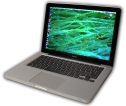
Portable Visual Subst
by NTWind Software
Visual Subst is a portable utility that allows users to create virtual drives and assign them to existing folders on their computer.
Visual Subst Overview
Visual Subst is a simple and intuitive utility that allows users to quickly create virtual drives and assign them to folders on their computer. Visual Subst is a great tool for quickly accessing files and folders that are often used in different locations. With Visual Subst, users can create virtual drives and assign them to folders, allowing for convenient access to the files and folders. Visual Subst also allows users to assign hotkeys to access their virtual drives, making it even easier to access the files and folders.
• Quickly create virtual drives and assign them to folders on your computer.
• Assign hotkeys to quickly access your virtual drives.
• Easily switch between different virtual drives.
• Drag and drop files and folders to the virtual drives.
• Use the built-in Explorer window to quickly access files and folders.
• Create multiple virtual drives with different names.
• Use the “Link” feature to link a virtual drive to a folder on a network.
• Automatically assign drive letters to virtual drives.
• Use the “Subst” feature to assign a virtual drive to a folder on the same computer.
• Automatically start the program at Windows startup.
• Use the “Drive Map” feature to quickly switch between virtual drives.
• Quickly access your virtual drives with a single click.
• Use the “Show Folder” feature to quickly open a folder in Windows Explorer.
• Use the “Run Program” feature to quickly launch a program from the virtual drive.
• Use the “Edit Text File” feature to quickly edit text files from the virtual drive.
• Automatically check for and apply updates to Visual Subst.
• Use the “Open Command Prompt” feature to quickly open a command prompt window.
• Use the “Set Icon” feature to set a custom icon for the virtual drive.
• Use the “Set Label” feature to set a custom label for the virtual drive.
• Use the “Set Comment” feature to set a custom comment for the virtual drive.
• Use the “Set Read-only” feature to set the virtual drive to be read-only.
• Use the “Set Hidden” feature to set the virtual drive to be hidden.
• Use the “Set System” feature to set the virtual drive to be system.
• Use the “Set Archive” feature to set the virtual drive to be archived.
• Use the “Set Offline” feature to set the virtual drive to be offline.
• Use the “Set Offline” feature to set the virtual drive to be removed.
• Use the “Remove Drive” feature to quickly remove a virtual drive.
• Use the “Remove All Drives” feature to quickly remove all virtual drives.
Visual Subst is a simple and intuitive utility that allows users to quickly create virtual drives and assign them to folders on their computer. Visual Subst is a great tool for quickly accessing files and folders that are often used in different locations. With Visual Subst, users can create virtual drives and assign them to folders, allowing for convenient access to the files and folders. Visual Subst also allows users to assign hotkeys to access their virtual drives, making it even easier to access the files and folders.
Visual Subst allows users to quickly create virtual drives and mount them as real ones for easy access to their data.Features:
• Quickly create virtual drives and assign them to folders on your computer.
• Assign hotkeys to quickly access your virtual drives.
• Easily switch between different virtual drives.
• Drag and drop files and folders to the virtual drives.
• Use the built-in Explorer window to quickly access files and folders.
• Create multiple virtual drives with different names.
• Use the “Link” feature to link a virtual drive to a folder on a network.
• Automatically assign drive letters to virtual drives.
• Use the “Subst” feature to assign a virtual drive to a folder on the same computer.
• Automatically start the program at Windows startup.
• Use the “Drive Map” feature to quickly switch between virtual drives.
• Quickly access your virtual drives with a single click.
• Use the “Show Folder” feature to quickly open a folder in Windows Explorer.
• Use the “Run Program” feature to quickly launch a program from the virtual drive.
• Use the “Edit Text File” feature to quickly edit text files from the virtual drive.
• Automatically check for and apply updates to Visual Subst.
• Use the “Open Command Prompt” feature to quickly open a command prompt window.
• Use the “Set Icon” feature to set a custom icon for the virtual drive.
• Use the “Set Label” feature to set a custom label for the virtual drive.
• Use the “Set Comment” feature to set a custom comment for the virtual drive.
• Use the “Set Read-only” feature to set the virtual drive to be read-only.
• Use the “Set Hidden” feature to set the virtual drive to be hidden.
• Use the “Set System” feature to set the virtual drive to be system.
• Use the “Set Archive” feature to set the virtual drive to be archived.
• Use the “Set Offline” feature to set the virtual drive to be offline.
• Use the “Set Offline” feature to set the virtual drive to be removed.
• Use the “Remove Drive” feature to quickly remove a virtual drive.
• Use the “Remove All Drives” feature to quickly remove all virtual drives.
1. Operating System: Windows 7 or higher
2. Processor: Intel Pentium 4 or higher
3. Memory: 512 MB RAM or higher
4. Hard Disk Space: 10 MB or higher
5. Video Card: DirectX 9.0c compatible graphics card
6. Sound Card: DirectX 9.0c compatible sound card
7. Network: Internet connection for online updates and registration
2. Processor: Intel Pentium 4 or higher
3. Memory: 512 MB RAM or higher
4. Hard Disk Space: 10 MB or higher
5. Video Card: DirectX 9.0c compatible graphics card
6. Sound Card: DirectX 9.0c compatible sound card
7. Network: Internet connection for online updates and registration
PROS
Allows creation of virtual drives easily and quickly.
Provides a user-friendly and intuitive interface.
Supports command-line arguments for advanced users.
Provides a user-friendly and intuitive interface.
Supports command-line arguments for advanced users.
CONS
Limited functionality compared to other virtual drive managers.
Potentially confusing interface for novice users.
No built-in support or help documentation for troubleshooting.
Potentially confusing interface for novice users.
No built-in support or help documentation for troubleshooting.
Muhammad O******i
I have used Portable Visual Subst software to quickly create virtual drives and have found it to be quite intuitive and easy to use. It took me only a few minutes to create a virtual drive and assign it a letter. The interface was clearly laid out and easy to understand. The software also allowed me to delete virtual drives quickly. I was also able to assign passwords to the virtual drives, which was a great security feature. I found that the software responded quickly and didn't take up too much memory. Overall, using Portable Visual Subst was a great experience.

